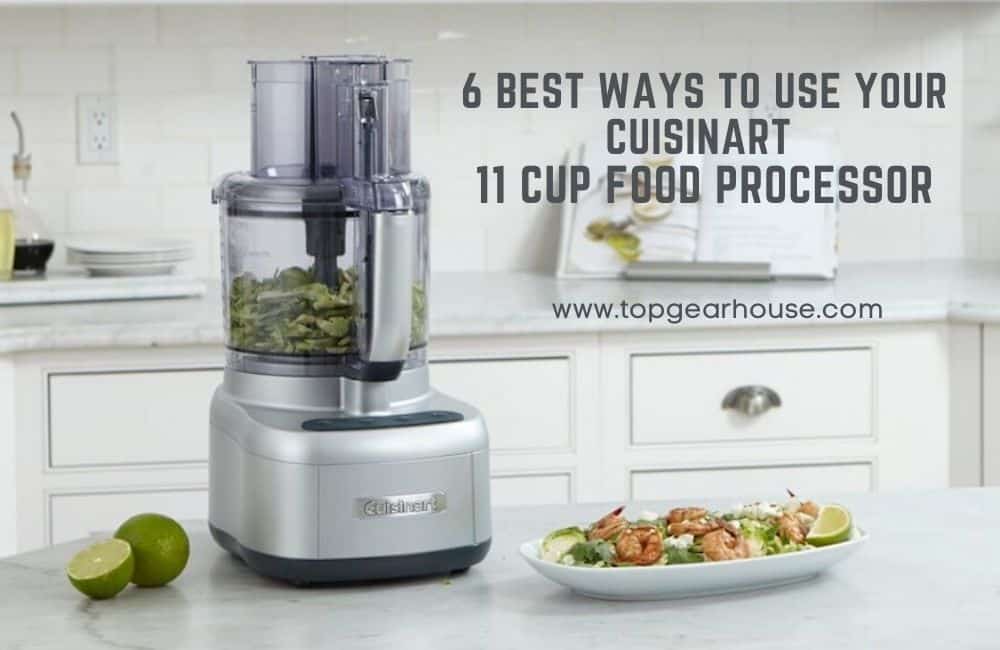For Short Time Readers
The Ultimate Guide to Heart-Healthy Recipes for High Blood Pressure
High blood pressure is a common condition affecting millions of people worldwide. Adopting a heart-healthy diet can play a significant role in managing this condition. This guide provides essential insights into the best foods and recipes to help keep your blood pressure in check.
Understanding High Blood Pressure
What is High Blood Pressure?
High blood pressure, also known as hypertension, occurs when the force of blood against the artery walls is consistently too high. This condition can lead to serious health issues like heart disease, stroke, and kidney problems. Blood pressure is measured in millimeters of mercury (mmHg) and recorded with two numbers: systolic (pressure when the heart beats) over diastolic (pressure when the heart rests between beats). Normal blood pressure is typically around 120/80 mmHg. When levels exceed 140/90 mmHg, it is considered high.
Causes and Risk Factors
Several factors contribute to high blood pressure, including genetics, age, and lifestyle choices. Consuming a diet high in sodium, lack of physical activity, excessive alcohol consumption, and chronic stress are significant contributors. Additionally, conditions like obesity, diabetes, and high cholesterol can increase the risk. Understanding these causes helps in adopting preventive measures and making informed dietary choices.
Importance of a Heart-Healthy Diet
A heart-healthy diet is crucial for managing blood pressure. It focuses on foods rich in nutrients like potassium, magnesium, and fiber while limiting sodium and unhealthy fats. Such a diet not only helps in lowering blood pressure but also reduces the risk of cardiovascular diseases. Incorporating fresh fruits, vegetables, whole grains, and lean proteins into your meals can make a substantial difference.
Essential Nutrients for Managing Blood Pressure
Potassium-Rich Foods
Potassium is a vital nutrient that helps balance sodium levels in the body. Foods like bananas, sweet potatoes, spinach, and avocados are excellent sources of potassium. Including these foods in your diet can help reduce the strain on your blood vessels and improve overall heart health.
Low-Sodium Alternatives
Reducing sodium intake is essential for managing blood pressure. Opt for low-sodium alternatives like fresh herbs, spices, and lemon juice to flavor your meals. Processed and packaged foods often contain high levels of sodium, so it’s best to avoid them. Reading labels and choosing products with less than 140 mg of sodium per serving can make a significant difference.
Healthy Fats
Not all fats are bad for your heart. Healthy fats, such as those found in olive oil, nuts, seeds, and fatty fish like salmon, can help reduce inflammation and improve heart health. These fats provide essential omega-3 fatty acids, which are known to lower blood pressure and reduce the risk of heart disease.
Foods to Avoid
High-Sodium Foods
High-sodium foods are a major culprit in raising blood pressure. These include canned soups, processed meats, and fast foods. Consuming too much sodium causes the body to retain water, increasing the volume of blood and, consequently, the pressure on your arteries. Limiting these foods can help maintain healthier blood pressure levels.
Processed and Packaged Foods
Processed and packaged foods often contain high levels of sodium, sugar, and unhealthy fats. These ingredients can contribute to weight gain, high blood pressure, and other health issues. Instead, focus on whole, unprocessed foods that are naturally low in sodium and rich in nutrients.
Sugary Beverages
Sugary beverages like soda, energy drinks, and sweetened teas can contribute to weight gain and high blood pressure. These drinks are often high in empty calories and sugar, leading to an increase in blood sugar levels and insulin resistance. Opt for water, herbal teas, or infused water with fresh fruits for a healthier alternative.
Ingredients for a Heart-Healthy Diet
Fresh Fruits and Vegetables
Fresh fruits and vegetables are packed with essential vitamins, minerals, and antioxidants. They are low in calories and high in fiber, making them ideal for managing blood pressure. Incorporating a variety of colorful fruits and vegetables into your meals can provide a range of nutrients that support heart health.
Whole Grains
Whole grains like quinoa, brown rice, and oats are excellent sources of fiber and essential nutrients. They help regulate blood sugar levels, reduce cholesterol, and maintain a healthy weight. Replacing refined grains with whole grains in your diet can contribute to better heart health and lower blood pressure.
Lean Proteins
Lean proteins such as chicken, turkey, fish, and legumes are important for maintaining muscle mass and overall health. These proteins are low in saturated fats and provide essential amino acids. Including lean proteins in your meals can help keep you full longer and support a heart-healthy diet.
Heart-Healthy Cooking Techniques
Steaming and Boiling
Steaming and boiling are healthy cooking methods that retain the nutrients in your food. These techniques use minimal oil and help preserve the natural flavors and textures of the ingredients. Steamed vegetables, boiled eggs, and fish are excellent options for a heart-healthy diet.
Grilling and Baking
Grilling and baking are great ways to cook lean proteins and vegetables without adding extra fat. These methods enhance the natural flavors of the food while keeping it healthy. Grilled chicken, baked fish, and roasted vegetables are delicious and nutritious options for your meals.
Using Herbs and Spices
Herbs and spices are fantastic alternatives to salt for adding flavor to your dishes. They are rich in antioxidants and can help reduce inflammation. Experimenting with herbs like basil, cilantro, and rosemary, as well as spices like turmeric, cumin, and paprika, can make your meals exciting and heart-healthy.
Sample Heart-Healthy Recipes
Breakfast
Oatmeal with Fresh Berries and Nuts
Start your day with a bowl of oatmeal topped with fresh berries and a handful of nuts. Oatmeal is rich in fiber, which helps regulate blood sugar levels and keep you full longer. Berries provide antioxidants, while nuts add healthy fats and protein.
Spinach and Mushroom Omelet
A spinach and mushroom omelet is a great way to pack in protein and vegetables. Spinach is high in potassium, and mushrooms add a rich, savory flavor. Use egg whites or a combination of whole eggs and egg whites for a lower-cholesterol option.
Lunch
Quinoa Salad with Mixed Vegetables
Quinoa is a nutrient-dense whole grain that pairs well with a variety of vegetables. Toss cooked quinoa with chopped bell peppers, cucumbers, cherry tomatoes, and a light vinaigrette. This salad is refreshing, filling, and perfect for a heart-healthy lunch.
Grilled Chicken and Avocado Wrap
A grilled chicken and avocado wrap is a delicious and satisfying option. Use a whole-grain tortilla, and fill it with grilled chicken, sliced avocado, lettuce, and a light yogurt-based dressing. This wrap is high in protein, healthy fats, and fiber.
Dinner
Baked Salmon with Asparagus
Baked salmon with asparagus is a simple and nutritious dinner option. Salmon is rich in omega-3 fatty acids, which help lower blood pressure and reduce inflammation. Asparagus is a great source of vitamins and minerals. Season the salmon with lemon, garlic, and herbs, and bake until tender.
Lentil and Vegetable Stew
A hearty lentil and vegetable stew is perfect for a cozy dinner. Lentils are high in protein and fiber, while vegetables like carrots, celery, and tomatoes add essential vitamins and minerals. This stew is filling, flavorful, and easy to prepare.
Snacks
Greek Yogurt with Honey and Almonds
Greek yogurt with honey and almonds is a tasty and nutritious snack. Greek yogurt is high in protein and probiotics, which support gut health. Honey adds natural sweetness, and almonds provide healthy fats and a satisfying crunch.
Apple Slices with Peanut Butter
Apple slices with peanut butter are a classic and delicious snack. Apples are high in fiber and antioxidants, while peanut butter provides protein and healthy fats. This combination is perfect for a quick and satisfying snack.
Meal Planning Tips
Weekly Meal Prep
Meal prepping can save time and ensure you have healthy options ready throughout the week. Spend a few hours on the weekend preparing ingredients and cooking meals in advance. Store them in portioned containers, so you can easily grab them when needed. This practice helps you stay on track with your heart-healthy diet and reduces the temptation to reach for unhealthy options.
Grocery Shopping List
Creating a grocery shopping list can help you stay organized and focused on buying nutritious foods. Include fresh fruits, vegetables, whole grains, lean proteins, and low-sodium options. Avoid processed and packaged foods, and opt for fresh, whole ingredients. Planning your shopping trip can make it easier to stick to your heart-healthy eating plan.
FAQs
| Question | Answer |
|---|---|
| What foods can help lower blood pressure? | Foods rich in potassium, magnesium, and fiber, such as fruits, vegetables, whole grains, and lean proteins, can help lower blood pressure. |
| How much sodium should I consume daily? | It’s recommended to consume less than 2,300 mg of sodium per day, but ideally, aim for less than 1,500 mg for better blood pressure control. |
| Can I still enjoy snacks on a heart-healthy diet? | Yes, opt for healthy snacks like Greek yogurt with honey and almonds, or apple slices with peanut butter, which are nutritious and satisfying. |
| Are there specific foods to avoid for high blood pressure? | Avoid high-sodium foods, processed and packaged items, and sugary beverages to help manage blood pressure effectively. |
| How can I add flavor to my meals without using salt? | Use herbs and spices like basil, cilantro, rosemary, turmeric, cumin, and paprika to add flavor without adding extra sodium. |
Conclusion
Managing high blood pressure through a heart-healthy diet involves making informed food choices and adopting healthy cooking techniques. By incorporating fresh fruits, vegetables, whole grains, and lean proteins into your meals, and avoiding high-sodium and processed foods, you can significantly improve your heart health. Remember to experiment with herbs and spices to keep your meals flavorful and exciting. With these tips and recipes, you’ll be well on your way to maintaining healthy blood pressure levels and enjoying a delicious, nutritious diet.
For more information on managing high blood pressure through diet, visit the [American Heart Association](https://www.heart.org/en/health-topics/high-blood-pressure) and [National Heart, Lung, and Blood Institute](https://www.nhlbi.nih.gov/health-topics/high-blood-pressure).
Best Foods for High Blood Pressure | Healthy Recipes






